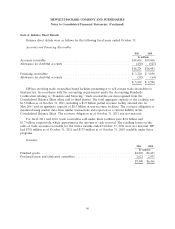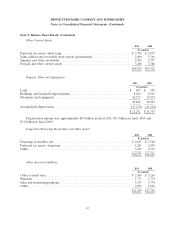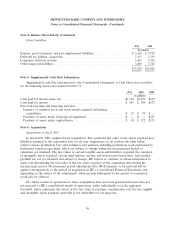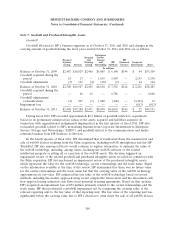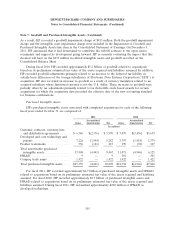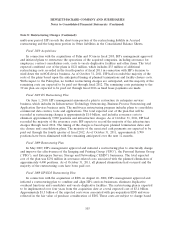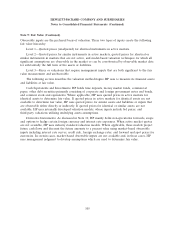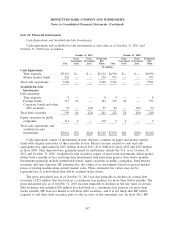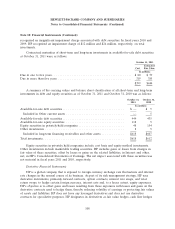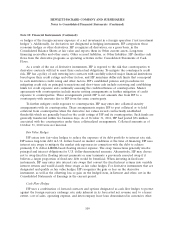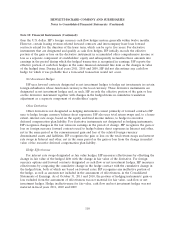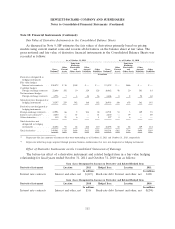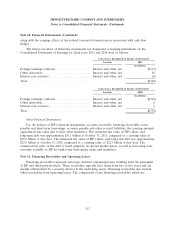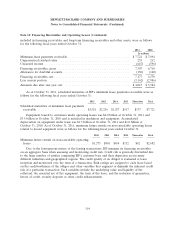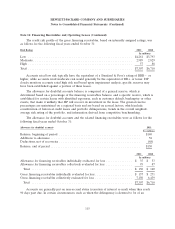HP 2011 Annual Report Download - page 113
Download and view the complete annual report
Please find page 113 of the 2011 HP annual report below. You can navigate through the pages in the report by either clicking on the pages listed below, or by using the keyword search tool below to find specific information within the annual report.HEWLETT-PACKARD COMPANY AND SUBSIDIARIES
Notes to Consolidated Financial Statements (Continued)
Note 9: Fair Value (Continued)
Observable inputs are the preferred basis of valuation. These two types of inputs create the following
fair value hierarchy:
Level 1—Quoted prices (unadjusted) for identical instruments in active markets.
Level 2—Quoted prices for similar instruments in active markets, quoted prices for identical or
similar instruments in markets that are not active, and model-based valuation techniques for which all
significant assumptions are observable in the market or can be corroborated by observable market data
for substantially the full term of the assets or liabilities.
Level 3—Prices or valuations that require management inputs that are both significant to the fair
value measurement and unobservable.
The following section describes the valuation methodologies HP uses to measure its financial assets
and liabilities at fair value.
Cash Equivalents and Investments: HP holds time deposits, money market funds, commercial
paper, other debt securities primarily consisting of corporate and foreign government notes and bonds,
and common stock and equivalents. Where applicable, HP uses quoted prices in active markets for
identical assets to determine fair value. If quoted prices in active markets for identical assets are not
available to determine fair value, HP uses quoted prices for similar assets and liabilities or inputs that
are observable either directly or indirectly. If quoted prices for identical or similar assets are not
available, HP uses internally developed valuation models, whose inputs include bid prices, and
third-party valuations utilizing underlying assets assumptions.
Derivative Instruments: As discussed in Note 10, HP mainly holds non-speculative forwards, swaps
and options to hedge certain foreign currency and interest rate exposures. When active market quotes
are not available, HP uses industry standard valuation models. Where applicable, these models project
future cash flows and discount the future amounts to a present value using market-based observable
inputs including interest rate curves, credit risk, foreign exchange rates, and forward and spot prices for
currencies. In certain cases, market-based observable inputs are not available and, in those cases, HP
uses management judgment to develop assumptions which are used to determine fair value.
105



